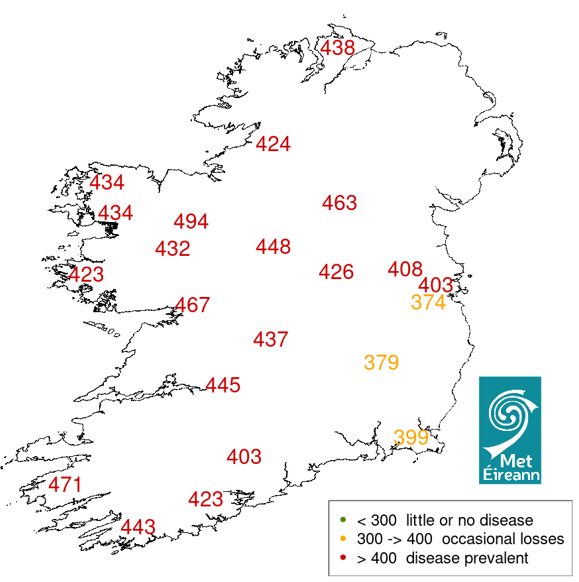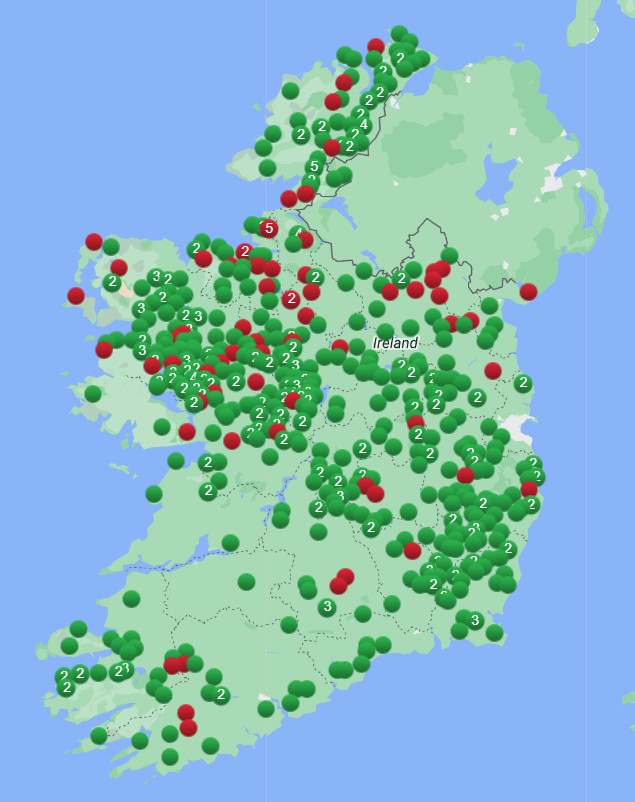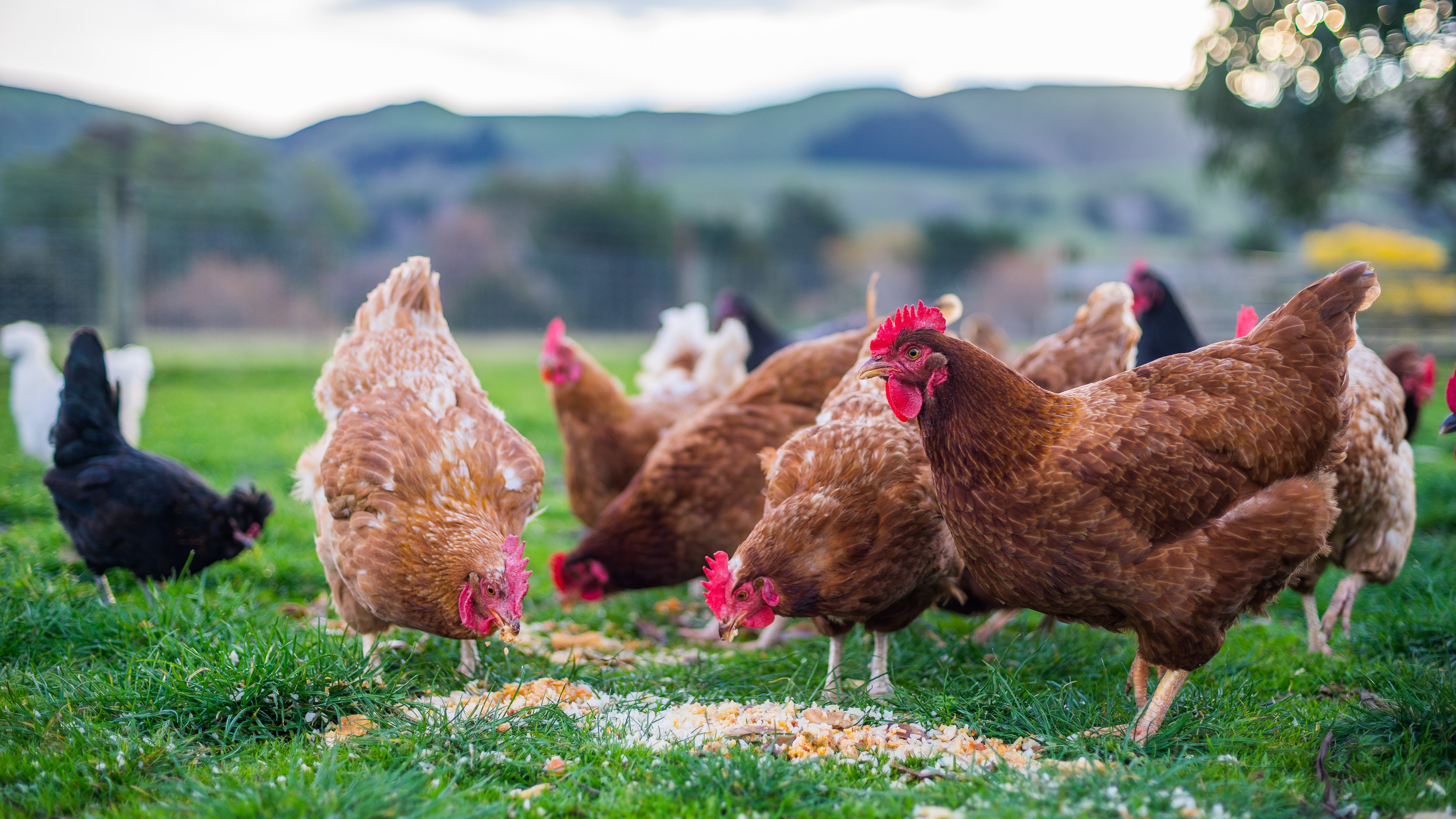Liver Fluke Forecast November 2023
Each year, the Department of Agriculture, Food and the Marine (DAFM) in collaboration with Met Éireann, UCD, Teagasc and Animal Health Ireland advises farmers of the predicted risk of disease caused by liver fluke (Fasciola hepatica) infection in livestock for that winter. This year’s forecast is based on meteorological data gathered between May and October 2023 by Met Éireann.
The Disease Forecast Summary
The Ollerenshaw Summer Index 2023 predicts infection being prevalent across all areas of Ireland with the exception of south Leinster where the risk of disease is somewhat lower.
The high values of the index are due to the warm, wet conditions experienced in July, August, September and October.
Figure 1. Ollerenshaw Summer Index values 2023, and the risk of disease due to liver fluke

Other Tools for Identifying the Risk and Timing of Liver Fluke Infections
Animal Health Ireland
The Beef HealthCheck programme, run in partnership with Meat Industry Ireland, collects and reports liver fluke information in cattle at slaughter from participating meat factories nationwide. Overall, this year’s levels of liver fluke infection are slightly lower than those reported in the last few years. However, the consistently high rainfall this year could result in a higher risk of liver fluke on certain farms going into winter. To date, abattoir examinations showed an average of 39% of herds with at least one animal with liver damage due to liver fluke and live liver fluke parasites were seen in 12% of herds. Counties in the northwest of Ireland were more heavily affected, with 70-80% of herds in Sligo, Roscommon and Donegal reported to have signs of liver fluke at slaughter. The prevalence within herds is typically low depending on the farm with 6.6% of animals presented to slaughter showing signs of liver fluke damage and 1.1% of animals showing live liver fluke parasites. It is important for farmers to know whether liver fluke is present on their farm and to treat accordingly to avoid production losses. The Beef HealthCheck reports can be a useful tool to understand liver fluke on-farm and are available to farmers on the ICBF website (beefhealthcheck.icbf.com) for those who have slaughtered animals at a participating factory since 2016. Visit https://shorturl.at/kyIZ7 for county level maps of liver fluke infection levels and further details on the programme.
The Regional Veterinary Laboratory (RVL) Liver Fluke Abattoir ELISA Survey
From June to December, DAFM collects blood samples from lambs in meat factories from a proportion of flocks at the time of slaughter. These are tested for the presence of liver fluke antibodies to determine the timing and geographical spread of liver fluke exposure in grazing lambs. The number of flocks selected for sampling from each county is generally proportionate to the sheep population of that county over the entire sampling period. A number of samples are taken from each selected flock and these are pooled at laboratory level. The presence of liver fluke antibodies in 2023 born lambs is therefore a sentinel for exposure to liver fluke in the wider sheep population in the region, as by definition these lambs must have been exposed during the 2023 grazing season.
From July to October 2023, blood samples from 757 flocks across 26 counties were tested for the presence of liver fluke antibodies (Table 1 and Figure 2).
Figure 2. Liver Fluke Abattoir ELISA Survey Results From July to October 2023

Please note: Green dots represent seronegative flocks and red dots represent seropositive flocks. Points have been moved slightly to preserve anonymity of flock owners. Numbers in circles indicate more than one flock sampled within that specific area.
Data from this survey indicates that the majority of infected flocks reside in counties in the West. Some positive and inconclusive results were reported in counties outside of the West and the Northwest in the August testing, possibly associated with a high summer rainfall level. This was the case in the border areas, midlands, South and in Leinster where there was substantial evidence of fluke exposure in lambs by October.
Table 1. 2023 Survey of the Prevalence of Liver Fluke Infection in Irish Sheep Flocks
| Month | No. Flocks Tested | No. ELISA Positive | Positive (%) |
|---|---|---|---|
| July | 268 | 16 | 6 |
| August | 176 | 25 | 14.2 |
| September | 179 | 51 | 28.5 |
| October | 134 | 19 | 14 |
Please see http://www.animalhealthsurveillance.agriculture.gov.ie/ for further details and maps of test results.
Farm-to-Farm Variation
In order to assess the risk of liver fluke disease on any particular farm, various environmental factors, particularly climate, landform and soil type (especially whether soils are heavy or free draining) must be taken into account. This is because the intermediate host of the parasite, which is a mud snail (Galba truncatula), occurs in soil that is slightly acidic and muddy. Thus, areas with rushes or wet patches (e.g., around gates, troughs) are particularly important with regard to liver fluke risk as they can help to maintain a population of the infective stage of the parasite. In addition, livestock owners should factor in prior liver fluke history on the farm as this is an important indicator of future disease risks.
Monitoring of Disease
Liver fluke infection tends to be chronic in cattle, resulting in ill-thrift and poor performance. Though chronic disease can also occur in sheep, infections may also result in more acute clinical signs, and sudden death in cases of heavy challenge.
Livestock owners should be vigilant for any signs of illness or ill-thrift in their animals and consult with their private veterinary practitioner (PVP) if they are concerned. In cases where the cause of death is not obvious, it is recommended that carcasses be referred by a PVP to the local Regional Veterinary Laboratory for post-mortem examination/necropsy.
Abattoir records of livers of previously sold fattened stock is also a valuable source of information for livestock owners on the prevalence of liver fluke infection on their own farm or on the efficacy of their control programme.
Treatment and Control
In areas of high risk and on farms where liver fluke infection has been diagnosed or where there is a prior history, livestock owners should consult with their PVP to devise an appropriate control programme.
When using flukicides to control and treat liver fluke infection, particular attention should be given to dosing cattle at the time of housing or shortly thereafter, and sheep in autumn or earlier in the year, where indicated by faecal examination results or prior disease history. For sheep, a drug effective against early immature as well as late immature and mature flukes should be used to protect against acute disease. In addition, sheep should be moved from affected pasture to prevent re-infection. If the flukicide given to cattle at housing is not effective against early immature fluke, then faecal samples should be taken six to eight weeks after housing and tested for the presence of liver fluke eggs. This will determine whether a follow-up flukicide treatment is necessary.
Given that flukicides do not have persistent activity, any cattle or sheep that are out-wintered are at risk of further infection post-treatment and follow-up flukicide treatments may be necessary. This is especially the case if they remain on high-risk pastures. In this case, it is advisable to monitor livestock for the occurrence of re-infection.
Veterinary advice should be sought on treatment protocols and on the appropriate interval at which such treatments should be given. Testing faecal samples for the presence of liver fluke can help determine both the need for and success of flukicide treatments. This is especially important given that resistance to flukicides is becoming increasingly widespread. In addition, bulk milk testing for liver fluke antibodies may be useful in dairy herds to monitor variation in exposure.
Where feasible, and as a long-term control option, areas of farms that provide suitable habitat for the mud snail such as wet muddy areas should be fenced off.
What about Rumen Fluke?
The rumen fluke, Calicophoron daubneyi, which has become more prevalent in Ireland over the last number of years in both cattle and sheep, uses the same intermediate host as the liver fluke. Rumen fluke infection is extremely common, especially in cattle, but only produces disease rarely.
If clinical signs such as rapid weight loss or diarrhoea are seen, or if there is a history of previous disease from rumen fluke on the farm, livestock owners should consult with their PVP as to whether treatment for rumen fluke is required. Challenge from larval rumen fluke can result in severe disease, typically but not exclusively in first season grazing cattle and in all ages of sheep. If larval rumen fluke infection is suspected please request this test when sending a representative number of faecal samples for examination to a laboratory as routine parasite examination may not detect this stage of the parasite. Post-mortem examination may also aid diagnosis. The presence of rumen fluke eggs in faecal samples of animals that are thriving and producing well does not indicate that treatment for rumen fluke is warranted.
Further Information Sources
Further details on liver fluke and its control and information on flukicide selection for cattle along with information on the Beef HealthCheck programme are available at https://shorturl.at/BDGLZ.






